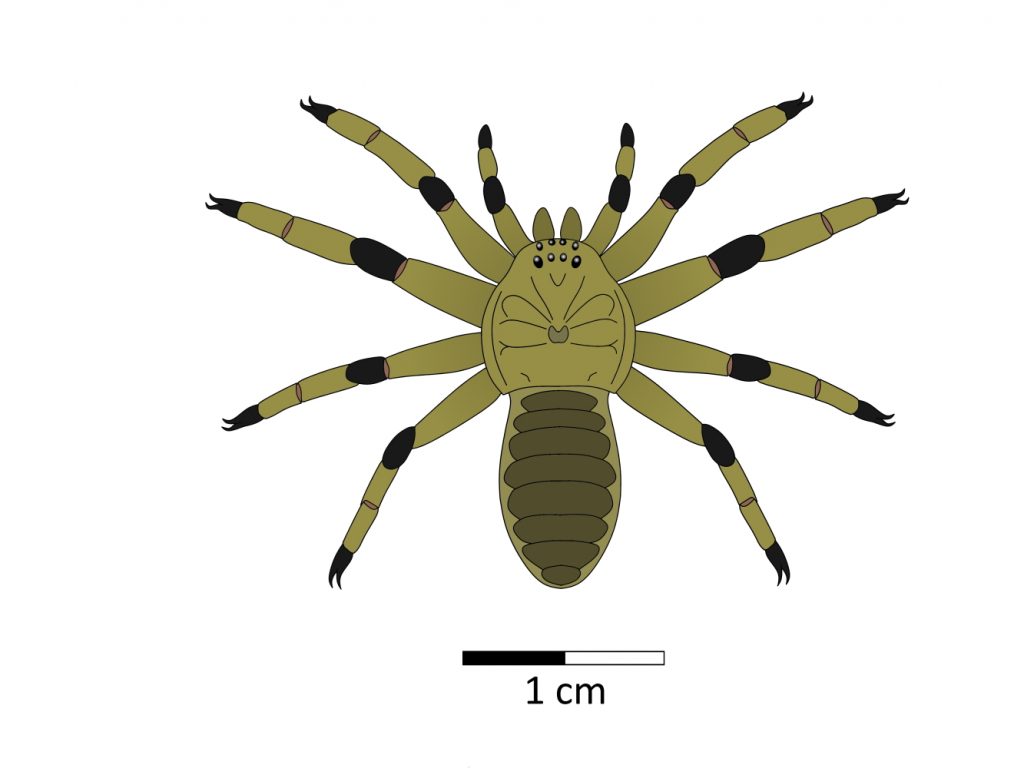
Ancient Spider
There are only 24 known Paleozoic spiders. A few of these have been lost; it can be tricky for paleontologists to study these arachnids. It has been disputed what the first spider was for a long time. Arthrolycosa, however, a small arachnid from Russia and North America, is the first confirmed spider.
Arthrolycosa was average size for a spider, ranging from 0.5-0.8 inches (12-21 millimeters) long, with a leg span of roughly 0.7-1.2 inches (18-30 millimeters). It had a deep fovea, the dip in its cephalothorax, or head. It had eight eyes, like modern spiders, arranged similarly to many modern non-web-building species. Protolycosa, Arthrolycosa’s closest relative, has been preserved with spinnerets, the characteristic of true spiders; Arthrolycosa likely had these too. It had eight tergites, pieces of armor on its abdomen. These gave it a tough-looking appearance, as well as protection. Arthrolycosa had long, strong legs for running after prey, after ambushing them from its burrow. Web-building spiders would not come for a very long time, requiring more sophisticated silk glands. One specimen of Arthrolycosa antiqua is the oldest spider fossil known; from the Bashkirian Stage of the Carboniferous period, 110 million years before the first dinosaurs.
We actually have a fossil of a juvenile Arthrolycosa, on the back of an adult. This juvenile was still in its cocoon.
Sources
http://www.paulselden.net/uploads/7/5/3/2/7532217/kinneycompletesmall.pdf
